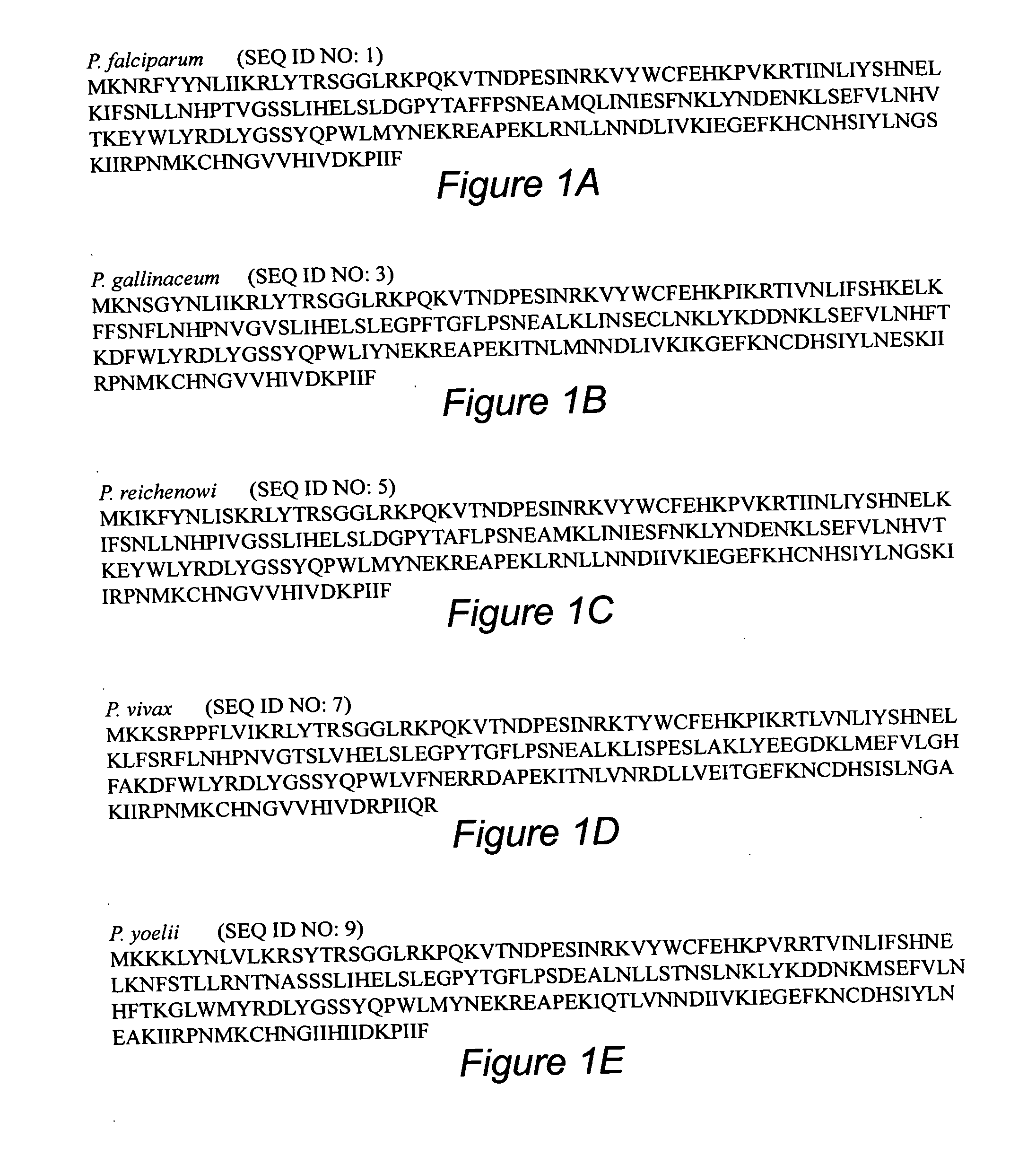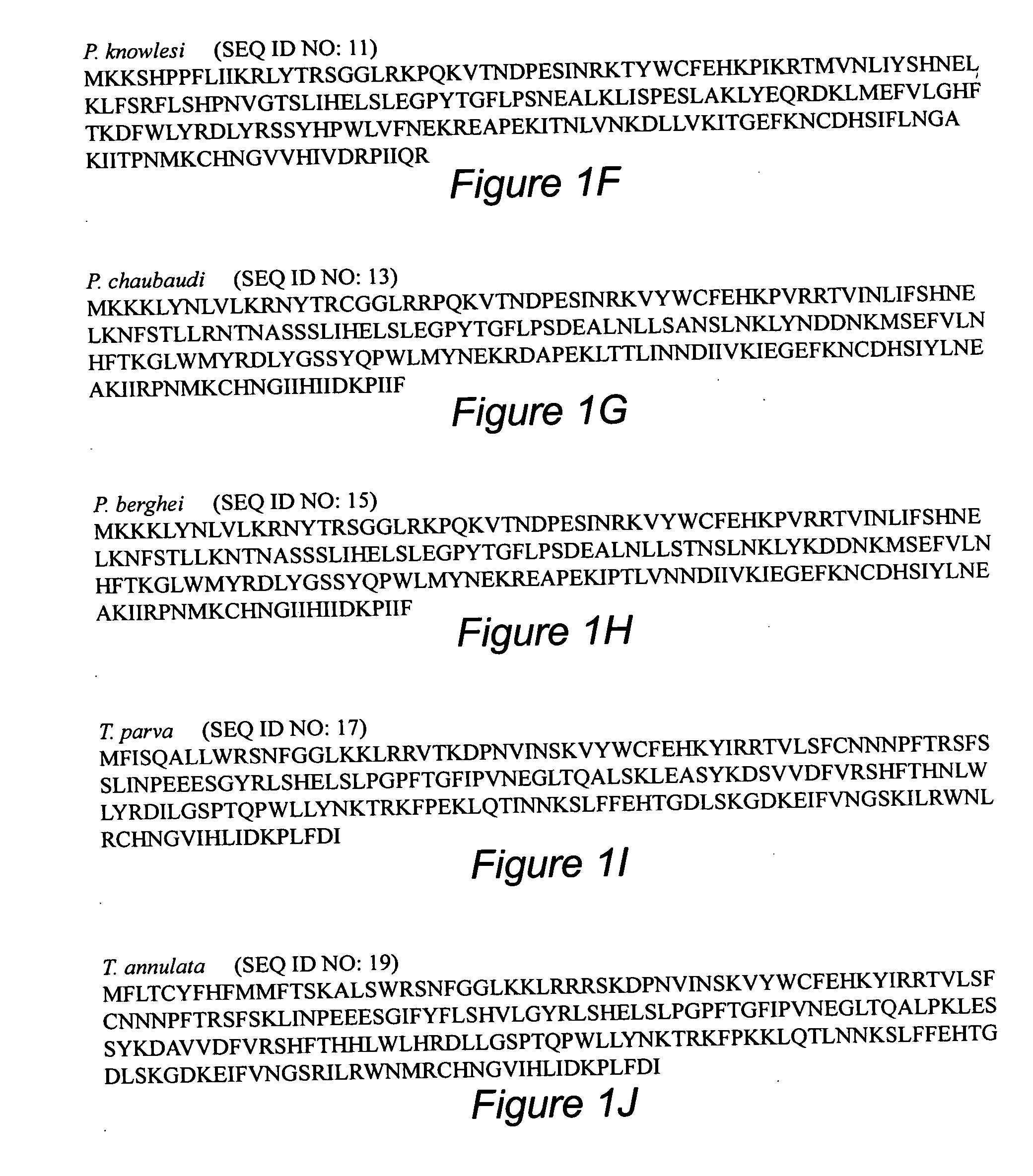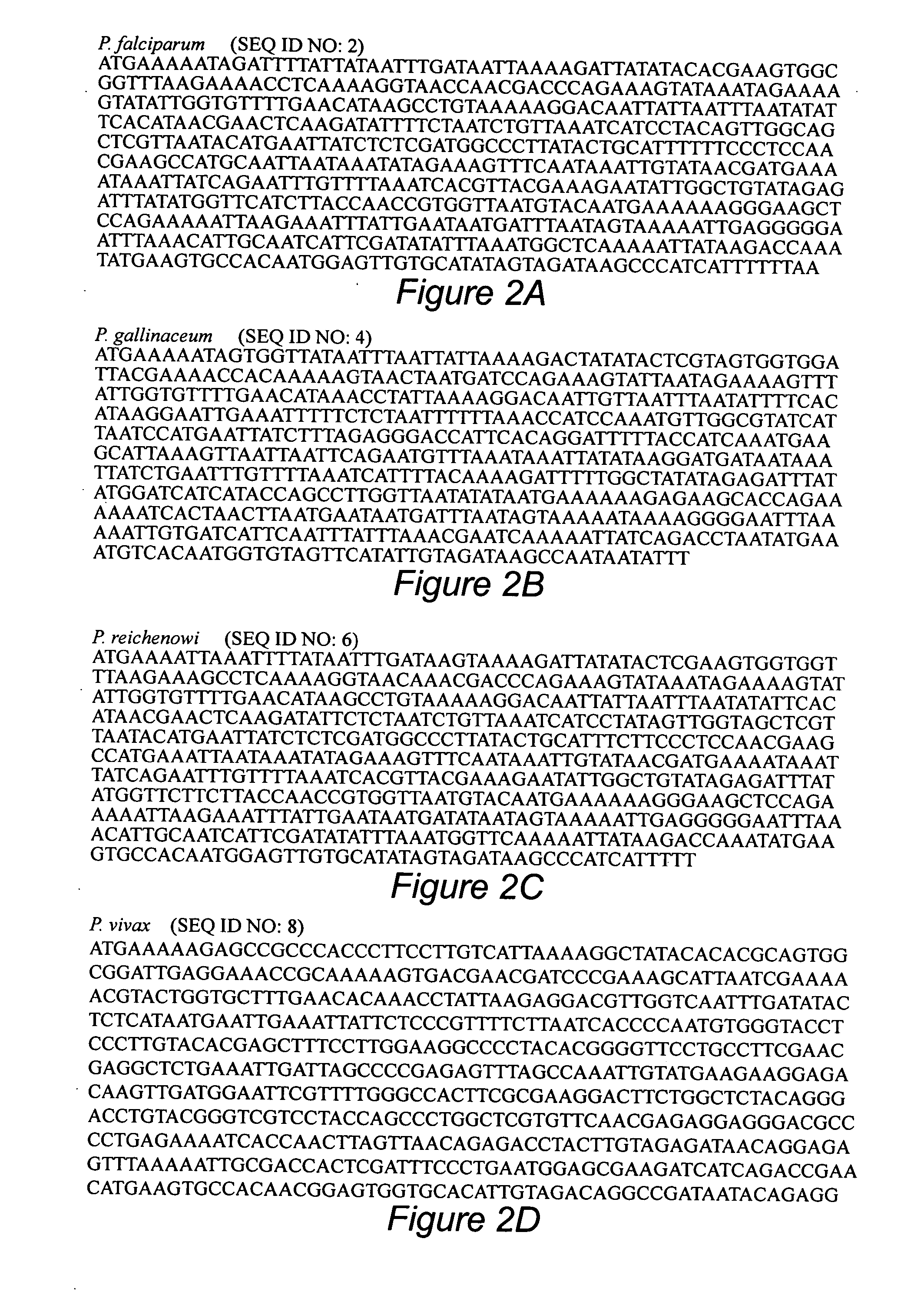Novel therapeutic target for protozoal diseases
a protozoal and disease technology, applied in the field of protozoal disease therapy, can solve the problems of severe anemia and cerebral malaria, unlicensed malaria vaccine, and extreme toxic to the parasi
- Summary
- Abstract
- Description
- Claims
- Application Information
AI Technical Summary
Benefits of technology
Problems solved by technology
Method used
Image
Examples
example 1
References for Example 1
[0127] 1. Cerami, C., Frevert, U., Sinnis, P., Takacs, B., Clavijo, P., Santos, M. J. & Nussenzweig, V. (1992) Cell 70, 1021-33. [0128] 2. Robson, K. J., Frevert, U., Reckmann, I., Cowan, G., Beier, J., Scragg, I. G., Takehara, K., Bishop, D. H., Pradel, G., Sinden, R. & et al. (1995) Embo J 14, 3883-94. [0129] 3. Wang, R., Doolan, D. L., Le, T. P., Hedstrom, R. C., Coonan, K. M., Charoenvit, Y., Jones, T. R., Hobart, P., Margalith, M., Ng, J., Weiss, W. R., Sedegah, M., de Taisne, C., Norman, J. A. & Hoffman, S. L. (1998) Science 282, 476-80. [0130] 4. Alonso, P. L., Sacarlal, J., Aponte, J. J., Leach, A., Macete, E., Milman, J., Mandomando, I., Spiessens, B., Guinovart, C., Espasa, M., Bassat, Q., Aide, P., Ofori-Anyinam, O., Navia, M. M., Corachan, S., Ceuppens, M., Dubois, M. C., Demoitie, M. A., Dubovsky, F., Menendez, C., Tomieporth, N., Ballou, W. R., Thompson, R. & Cohen, J. (2004) Lancet 364, 1411-20. [0131] 5. Moorthy, V. S., Imoukhuede, E. B., Keat...
example 2
Inhibitory Epitope in FRAP
[0173] Identification of inhibitory epitope by peptide mapping As we have demonstrated that antibodies against FRAP2, an 87 amino acid polypeptide can prevent invasion, the region of the protein responsible for this recognition was mapped by developing a set of overlapping peptides that were utilized for ELISA. A set of 10 overlapping peptides (Table 6) were chemically synthesized and used as coating antigen to identify the epitope recognized by these antibodies. Overlapping Peptides HAI-3,4, & 5 were predominantly recognized by these antibodies, suggesting that a 32 amino acid sequence (TRSGGLRKPQKVTNDPESINRKVYWCFEHKPV, SEQ ID NO: 24), comprised by these peptides is being recognized by the inhibitory antibodies (Table 7). A sequence comparison of these peptides reveals that an 8 amino acid sequence (TNDPESIN, SEQ ID NO: 37) is present in all of them (FIG. 7) suggesting that this sequence could be an important component of the region recognized by the ant...
example 3
References for Example 3
[0186] 1. Francis, S. E., Sullivan, D. J., Jr. and Goldberg, D. E. (1997) Annu Rev Microbiol, 51, 97-123. [0187] 2. Gluzman, I. Y., Francis, S. E., Oksman, A., Smith, C. E., Duffin, K. L. and Goldberg, D. E. (1994) J Clin Invest, 93, 1602-1608. [0188] 3. Pagola, S., Stephens, P. W., Bohle, D. S., Kosar, A. D. and Madsen, S. K. (2000) Nature, 404, 307-310. [0189] 4. Slater, A. F. and Cerami, A. (1992) Nature, 355, 167-169. [0190] 5. Slater, A. F., Swiggard, W. J., Orton, B. R., Flitter, W. D., Goldberg, D. E., Cerami, A. and Henderson, G. B. (1991) Proc Natl Acad Sci USA, 88, 325-329. [0191] 6. Sullivan, D. J., Jr., Gluzman, I. Y. and Goldberg, D. E. (1996) Plasmodium hemozoin formation mediated by histidine-rich proteins. Science, 271, 219-222. [0192] 7. Wellems, T. E., Walker-Jonah, A. and Panton, L. J. (1991) Proc Natl Acad Sci USA, 88, 3382-3386.
PUM
| Property | Measurement | Unit |
|---|---|---|
| pH | aaaaa | aaaaa |
| pH | aaaaa | aaaaa |
| pH | aaaaa | aaaaa |
Abstract
Description
Claims
Application Information
 Login to View More
Login to View More - R&D
- Intellectual Property
- Life Sciences
- Materials
- Tech Scout
- Unparalleled Data Quality
- Higher Quality Content
- 60% Fewer Hallucinations
Browse by: Latest US Patents, China's latest patents, Technical Efficacy Thesaurus, Application Domain, Technology Topic, Popular Technical Reports.
© 2025 PatSnap. All rights reserved.Legal|Privacy policy|Modern Slavery Act Transparency Statement|Sitemap|About US| Contact US: help@patsnap.com



